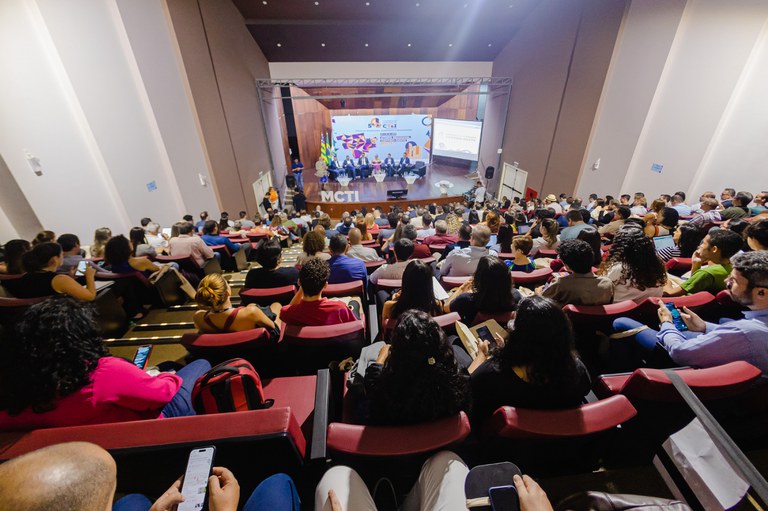Martha LyleData Protection Lawyer, Master in Law and International Business from Universidad Internacional Iberoamericana Europea del Atlántico and Universidad Unini México, Data Protection Officer ECPB from Maastricht University, Certified Data Protection Officer by Exin and FGV-RJ and Chairman of the INPD Corporate Communications Committee
Pedro Frattini KimMaster in Artificial Intelligence and Data Science from the University of Grenoble Alpes
Chances are, you’ve already heard of ChatGPT. You may have interacted with technology and been surprised by your ability to understand the questions asked and the adequacy of your answers.
However, regardless of your level of knowledge, it is important to make some basic considerations about the topic and its possible effects in order to better understand the issue.
We have chosen to start by deciphering what this technology is and what makes it different from others, enabling us to reflect on its evolution and predict a future in which we will be increasingly linked to the advancement of artificial intelligence.
ChatGPT is a language model that is able to predict responses in a chat environment. It has been adapted from an existing model, GPT-3.5, to act like a chatbot, interacting with a user in a chat environment where the answers given by the model appear to be from a human.
For a better understanding, it is important to understand the meaning of the abbreviation GPT; Prefabricated Generative Transformers. It is an AI model with general-purpose language comprehension skills, that is, it is not a model that only focuses on a single task, such as translating texts.
This model of AI is characterized by a “deep learning” process, called deep learning, that uses interconnected neurons in a layered structure, similar to the human brain.
OpenAI, the AI research lab that created ChatGPT, introduced the first version of the technology in 2018, but it was only in 2020 that the technology gained attention with its third version, GPT-3, featuring a model trained using 175 billion parameters. And a much stronger text base.
Now, we are in the fifth edition and technology is introducing improved techniques that allow more complex instructions to be received and, therefore, to generate more coherent responses.
Added to this is the fact that the GPT-3.5 version has been trained with a huge base of text available on the web, including posts on social networks and content available in the media.
ChatGPT learns from user feedback, making its responses increasingly consistent, allowing us to make good predictions about the continuous improvement of technology based on interactions with users.
In order to better understand the performance and capabilities of the tool, we chose the answer given by ChatGPT itself to one of our interactions, when we asked how it works.
It continues after the announcement
Here’s the answer: “ChatGPT is a language model that has been trained to generate responses to user questions and commands in a way that makes it look like you are having a conversation with a human. It was built on a large amount of text data and trained using machine learning techniques to learn how to produce appropriate and coherent responses to different types of Input. In short, ChatGPT is a language tool designed to simulate a human conversation in a natural and coherent way. It can be used in different contexts to provide automatic responses and interactions with users.”
The sample above shows that a user’s simple command of a technology to briefly describe her behavior does indeed provide benefits for her ability to appear human, and provides information and advice for what is required of her. And there is no doubt that this is just the beginning of a disruptive way of using artificial intelligence, where when we seek information in the form of questions and answers, on the most diverse topics, we are provided with knowledge, references, and depending on the formulation of interaction with counseling.
Thus, a new form of search engine was created, which is efficient and friendly in terms of user experience. However, like any language model fueled by a large volume of data, ChatGPT presents risks and implications associated with its use, such as bias and discrimination, among others.
Among some technology risks worth highlighting, we have:
The tool is capable of serving a great educational purpose, aiding in problem solving and new learning, but it does require that it be used responsibly. Although some of the results are impressive due to their degree of coherence and robustness, this does not mean that the information provided is always correct or that it is meaningless, leaving it up to the user to validate any information provided by the language model, even if the language used is indicative of conviction Full and complete ownership of the matter in question.
Another related point is ChatGPT’s ability to become a great search engine. Undoubtedly, with all its capabilities, it is able to compete with or complement tools on the web, such as Google. In fact, there are already rumors that the form could be integrated into Microsoft’s Bing tool.
With the current scenario, it is possible to conjecture that it is likely that language models such as these that are currently being created and improved, will not replace search engines, but complement them, due to their different purposes. Although ChatGPT provides a better answer to user queries, it still cannot be used for web browsing.
It continues after the announcement
In the field of health, a study recently published by Drexel University (USA) showed that ChatGPT-3 is able to provide handouts that indicate the onset of dementia with 80% accuracy, based on the natural language of the user interacting with the tool. In the words of the author of the research published in “PLOS Digital Health”, Felix Agpafor, the language analysis performed by the AI model in question, makes it a promising candidate for recognizing subtle changes in speech that may indicate the onset of a picture of insanity.
Therefore, it is necessary to realize the potential of technology, its benefits and the risks arising from its misuse. In the pursuit of ethical and responsible AI, it is necessary to ensure that the technology training base is diverse and balanced, thus reducing the risk of reproducing bias and discrimination.
Starting with the acknowledgment that ChatGPT is trained by an extensive database, the logical consequence is the conclusion that, if fortuitously, this database is tainted by discriminatory bias, then these patterns will consequently be reflected in the responses generated by the model.
In this sense, we are aware of the scale of technology, the immeasurable potential of its benefits, as well as the challenges imposed, natural to any and all disruptive paradigms, which underscore the importance of developing and strengthening regulations for artificial intelligence, such as a proposal to regulate artificial intelligence in the European Union, IA ACT and proposal to regulate Artificial intelligence in Brazil, at the end of the year to the Federal Senate.

“Incurable thinker. Food aficionado. Subtly charming alcohol scholar. Pop culture advocate.”


/https://i.s3.glbimg.com/v1/AUTH_bc8228b6673f488aa253bbcb03c80ec5/internal_photos/bs/2024/3/K/NxgIGERRS1MxdIApxL8Q/abelbelmonte.jpg)



:quality(80)/cloudfront-us-east-1.images.arcpublishing.com/estadao/DFUOO5RXFFP7PJMB7OOXPBUKUI.jpg)
More Stories
Will Manor Lords be released for PlaySation and Xbox?
South Korean nuclear reactor breaks record
Drivers urgently need to know about these new radars